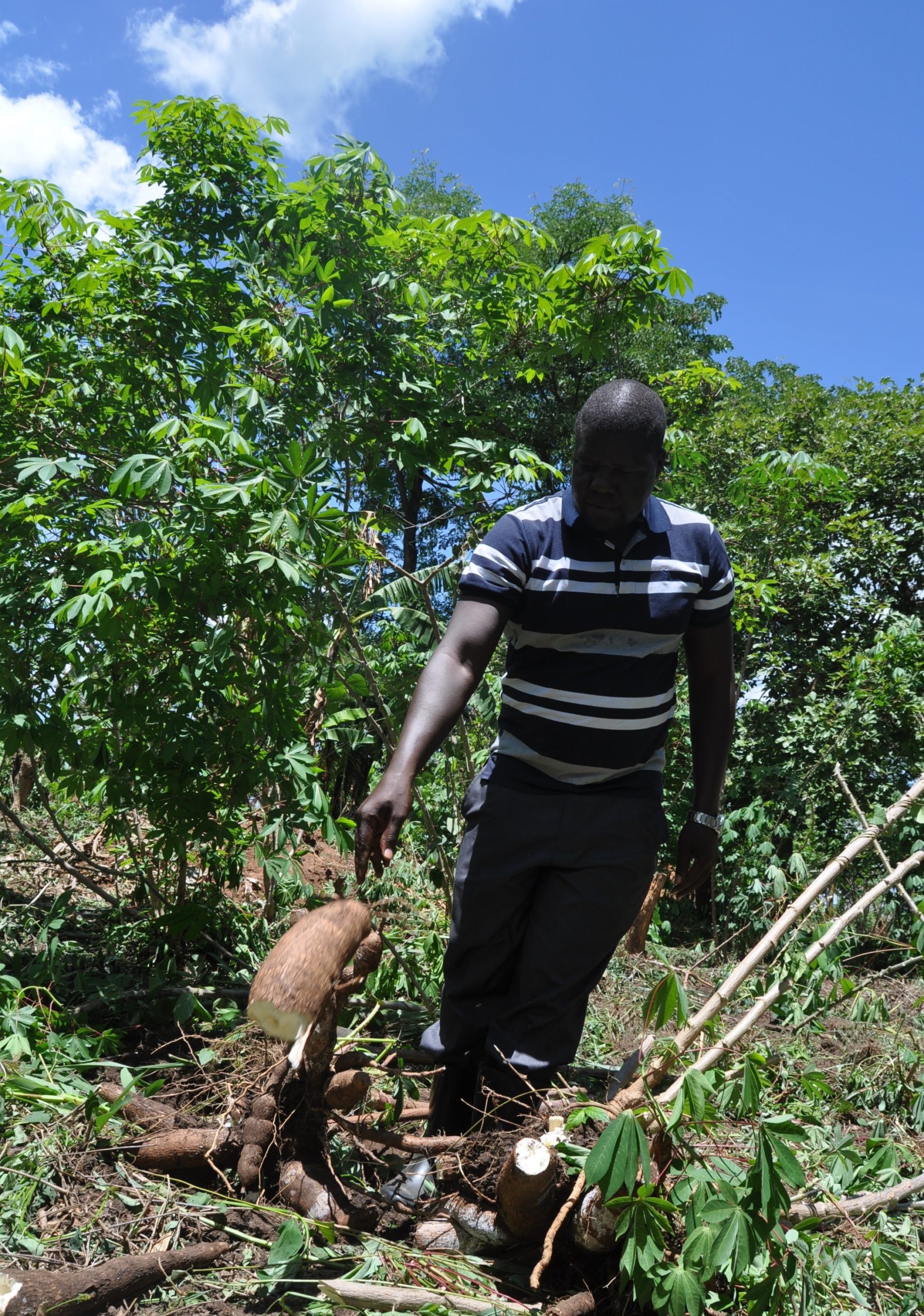NWOYA – In 2017 cassava brown streak disease wiped out the cassava crop in the northern district of Nwoya.
Two years later, frantic attempts by farmers in the district to resume growing cassava have fizzled after they failed to find disease free cassava cuttings.
The push to resume growing the fast selling crop was led by Nwoya Cassava and Rice Growers Cooperative Society Limited, two years after the crop was battered by the outbreak of the cassava brown streak disease in 2017.
The cooperative, formed in 2018, has 92 members. Located in Bwobonam Parish in Alero Sub County, the cooperative members first planted 20 acres of cassava in 2018, but the crop was wiped out by the cassava brown streak disease in 2017.
Cassava brown streak is a viral disease that presents with yellowing, spotty leaves and rotting tubers.
According to the Food and Agricultural Organization, cassava brown streak is one of the greatest impediments to cassava growing.
Interviewed by theCooperator, Michael Odong, the vice chairperson of Nwoya Cassava and Rice Growers’ Cooperative Society Limited, said the disease hit them hard. The group planted the NAROCass 1 variety and the CARITAS, popular variety, named after the Catholic Relief Development Social Service Organization, CARITAS, which introduced it.
“In 2018, we planted 20 acres of NAROCass 1 and CARITAS and we expected to get at least Shs 30 million, but all the crop was wiped out by the disease,” Odong said.
After the disease rout, cassava farmers were advised to leave their farms to fallow for at least two years to get rid of the disease. The cooperative then switched to rice growing in the last two years. The switch, they said affected their profit margins.
“In the two years that we didn’t plant cassava, we lost an estimated Shs 50 million. This is because our cassava had ready market at Bukona Agro Processing factory here in Nwoya,” Odong said. Other clients, Odong said, came from the neighboring districts of Arua and Gulu.
Two years after the outbreak, farmers say they plan to plant at least 35 acres of NAROCass 1 cassava variety, but have failed to find disease free cassava cuttings in the district.
“If we had planting materials, we would have planted in April, but we did not plant even an acre. We have moved everywhere in the district and farmers tell us they don’t have cassava cuttings,” Odong said.
https://thecooperator.news/nwoya-farmers-turn-to-cashew-nut-growing/
Fred Akena, a member of the cooperative, said he had planted a second cassava garden when the disease hit the district.
“I planted an acre in 2017 and got Shs 1.5 million, but in the subsequent year, I planted five acres and all were destroyed by the disease. This demoralized me so much because I had injected a lot of money from ploughing to buying the cassava cuttings,” Akena said, adding that “I have no plans to resume growing cassava. I think the losses are too much.”
Alfred Kilama, the Nwoya District Agricultural Officer, advised farmers whose gardens have fallowed to plant clean and healthy cassava cuttings, which are easy to identify from the spotted infected cassava cuttings.
Kilama said farmers fuel the disease spread because they refuse to have their planting materials inspected by responsible authorities.
“Some farmers bring cassava cuttings without informing the district to inspect them as required. When you are bringing planting materials from another district, there should be a letter of no objection to confirm you are bringing materials from a district that has no cassava disease; you should also come with a movement permit,” Kilama said.
“Another challenge is brought by development partners and investors who either transport cassava cuttings at night or during day, but their materials are not inspected,” he said.
Kilama advised cassava farmers to grow the new disease-resistant cassava varieties.
“Most farmers are also hesitant to embrace new varieties. They want to continue planting old varieties, which are already prone to infection,” Kilama said.
Nwoya has a huge market for cassava owing to the presence of Bukona Agro Processing Factory, which requires 200 metric tonnes of cassava daily.
Buy your copy of thecooperator magazine from one of our country- wide vending points or an e-copy on emag.thecooperator.news
